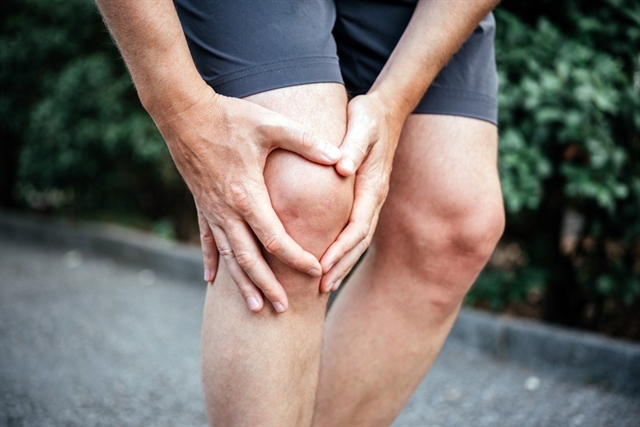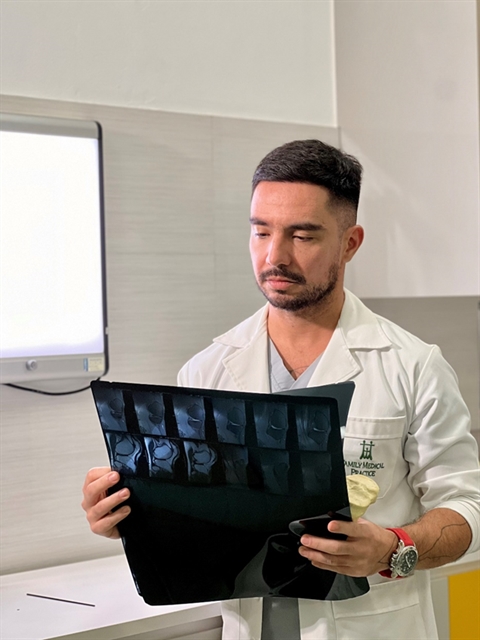 Life & Style
Life & Style

Dr. Andres Sosa*
Are you experiencing knee pain while running? Knee pain is the single largest complaint for runners, accounting for more than 27 per cent of all running injuries.
Knee pain is usually down to conditions such as ITB Syndrome or Runner’s Knee, but in this series of articles we will be looking at meniscal tears.
In the first article, I will provide up-to-date science regarding a meniscus tear. Following publication will discuss the nuance involved in this pathology and in the last part we will look at how to effectively treat this problematic injury.

|
| Knee pain is the single largest complaint for runners, accounting for over 27 per cent of all running injuries. Photo shutterstock.com |
There are many reasons why a meniscus tear can occur, usually due to direct trauma, sudden twisting, or like most running injuries, when your training demands exceed your body’s training tolerance.
The severity of a meniscal tear can range from a mild tear with little to no discomfort to a complete rupture of the meniscus with significant pain and loss of function.
Ignoring a meniscus tear can end up leaving you completely side-lined. So, can you run on a torn meniscus? Let’s first have a look at what a torn meniscus is!
Nestled within the knee joint, the meniscus plays a crucial role in providing stability and support. This crescent-shaped fibrocartilage acts as a shock absorber, safeguarding the knee from the rigors of activities like walking, running, and jumping.
The meniscus is usually split into the medial and lateral meniscus. The medial meniscus is larger and more C-shaped, with the lateral meniscus usually being smaller and more O-shaped.
Several types of meniscal tears can occur, and each can vary in severity. Let’s take a look at the most common ones:
1. Vertical Tear: This tear occurs along the long axis of the meniscus, perpendicular to the tibial plateau.
2. Horizontal Tear: This tear runs parallel to the tibial plateau and divides the meniscus into upper and lower segments.
3. Bucket-Handle Tear: This is the most common type of displaced flap tear, where a portion of the meniscus is displaced into the joint space.
4. Vertical Radial Tear: These tears result in two separate pieces of the meniscus or a single piece still attached to the tibia. Repairing these tears is usually not possible, and they may lead to long-term degenerative changes in the knee.

|
| Dr Andres Sosa. Photo courtesy of Family Medical Practice |
5. Complex Tear: These tears involve two or more configurations of tears within the meniscus.
It’s important to note that the specific type of meniscal tear can influence the treatment options available and the expected outcomes.
Running with Meniscus Tear: Symptoms and Diagnosis
It’s interesting to note that not all meniscal tears exhibit noticeable symptoms.
The field of epidemiology studies on meniscal lesions faces challenges because many of these tears go unrecognised.
Meniscal tears don’t always present with characteristic symptoms, and some may even heal on their own without intervention.
However, here are the most common symptoms you may expect to experience:
• Knee Pain: A sharp or dull pain along the knee joint, which gets worse with prolonged movement, twisting, or squatting.
• Swelling: You may notice swelling or puffiness around the knee joint due to inflammation.
• Knee Instability: It is usual to have a feeling of unsteadiness as if the knee is going to give way – a common experience when walking upstairs or bending over.
• Locking Sensation: You can notice a clicking noise when bending, along with the knee getting stuck in a certain position.
• Limited Range of Motion: When you move, you may have difficulty fully bending or straightening the knee.
• Difficulty Weight Bearing: If the knee is causing you pain, you may have trouble putting weight on the affected leg.
There are plenty of tests to see if you have a meniscus tear, so book yourself an appointment with a healthcare professional to get an accurate diagnosis. Stay tuned for the next article in this series, where we will dive deeper in the causes of meniscal tears. Family Medical Practice
*Dr Andres Sosa is our Orthopedic Surgeon specialising in sports medicine and trauma. After his residency in Orthopedics, he took a Master’s in Upper Limb Surgery at the University of Bologna (Italy). Furthermore, the Sports Medicine programme at Thomas Jefferson University in Philadelphia (USA) obtained his second Master’s in Shoulder Surgery with the University of Andalucía (Spain). Once in Việt Nam, he continued his surgical training with Arthrex ArthroLab (Singapore) focused on arthroscopic techniques for shoulder and knee injuries.
Dr Sosa joined FMP in 2018 and is responsible for all orthopedic and trauma cases. He is also a sports nutrition expert from Major University (Chile) and is fluent in English, Italian, and Spanish.
Visit Family Medical Practice Hanoi 24/7 at 298I Kim Mã Street, Kim Mã Ward, Ba Đình District.
To book an appointment, please call us at (024).3843.0784 or via Whatsapp, Viber or Zalo on +84.944.43.1919 or email hanoi@vietnammedicalpractice.com.
FMP’s downtown location in Hồ Chí Minh is in Diamond Plaza, 34 Lê Duẩn Street, Bến Nghé Ward, District 1, and 95 Thảo Điền Street, District 2. Tel. (028) 3822 7848 or email hcmc@vietnammedicalpractice.com.




